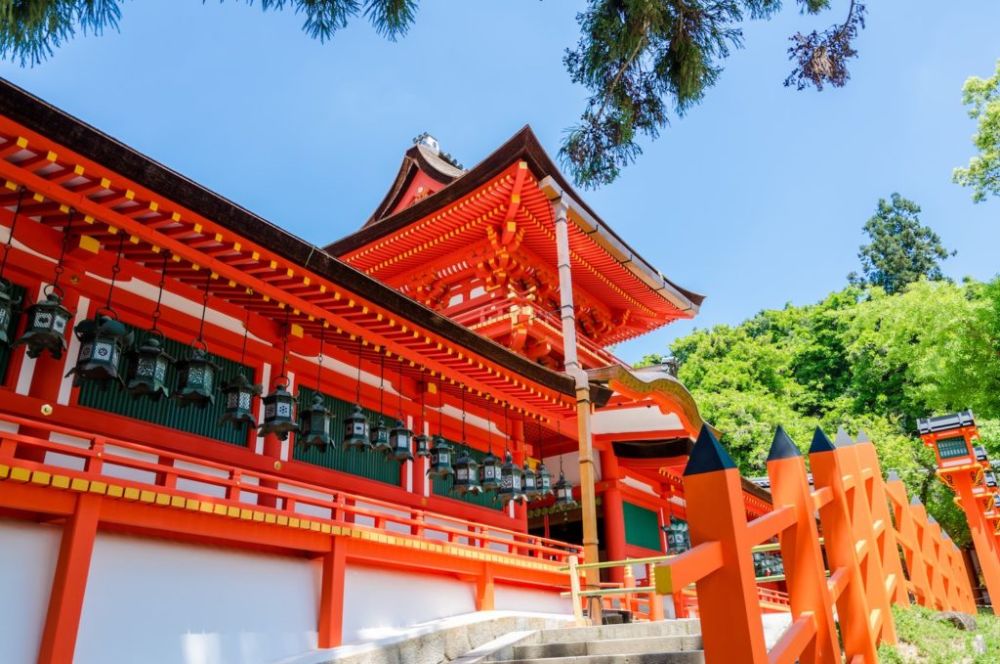

The Kasuga Taisha Shrine, established in 768 AD, is an emblem of the city of Nara's ancient history and spirituality. It was founded by the Fujiwara clan, one of the most influential families in Japanese history. As part of the historic monuments of ancient Nara, the shrine has been listed as a UNESCO World Heritage Site since 1998.
Throughout its long history, Kasuga Taisha Shrine has been a significant pilgrimage site. The shrine is renowned for its lantern festivals, known as Mantoro, which take place in February and August when thousands of lanterns are lit, creating an enchanting atmosphere that attracts visitors from across Japan and around the world.
The Shrine is famous for its unique and beautiful architecture, being home to hundreds of bronze and stone lanterns that line the paths leading to the shrine. During the Heian period, these lanterns were donated by worshippers, and since then, they have become a core element of the Kasuga Taisha experience.
The wisteria flowers that bloom in spring are a highlight for many visitors and a symbol of the Fujiwara family. The deer of Nara Park, considered to be divine messengers, also add to the spiritual feel of the place.
In recent times, there has been an increased interest in cultural and spiritual tourism. Visitors are looking to connect with the spiritual heritage of the region and learn about Shinto traditions. Kasuga Taisha Shrine has responded by offering more informational tours and cultural experiences.
Eco-tourism is also on the rise, and tourists are drawn to the shrine's serene natural setting. Efforts to maintain and showcase the natural and cultural heritage resonate well with contemporary travel expectations. Sustainable tourism practices at the shrine and its surrounding park ensure that the beauty of the shrine is preserved for future generations.
The Kasuga Taisha Shrine remains an extraordinary testament to the living history of Nara and continues to be a must-visit destination for anyone traveling to Japan. The peaceful and awe-inspiring environment offers a journey not just through the beautiful alleys of Japan's past but also through the spiritual paths that have been treaded by pilgrims for centuries.
For those interested in experiencing the spiritual and cultural richness of this ancient site, the best times to visit are during the lantern festivals or in the spring when the wisteria is in full bloom. To fully appreciate the history, it's recommended to take a guided tour, which can provide deeper insight into the lore and significance behind Kasuga Taisha's practices and traditions.